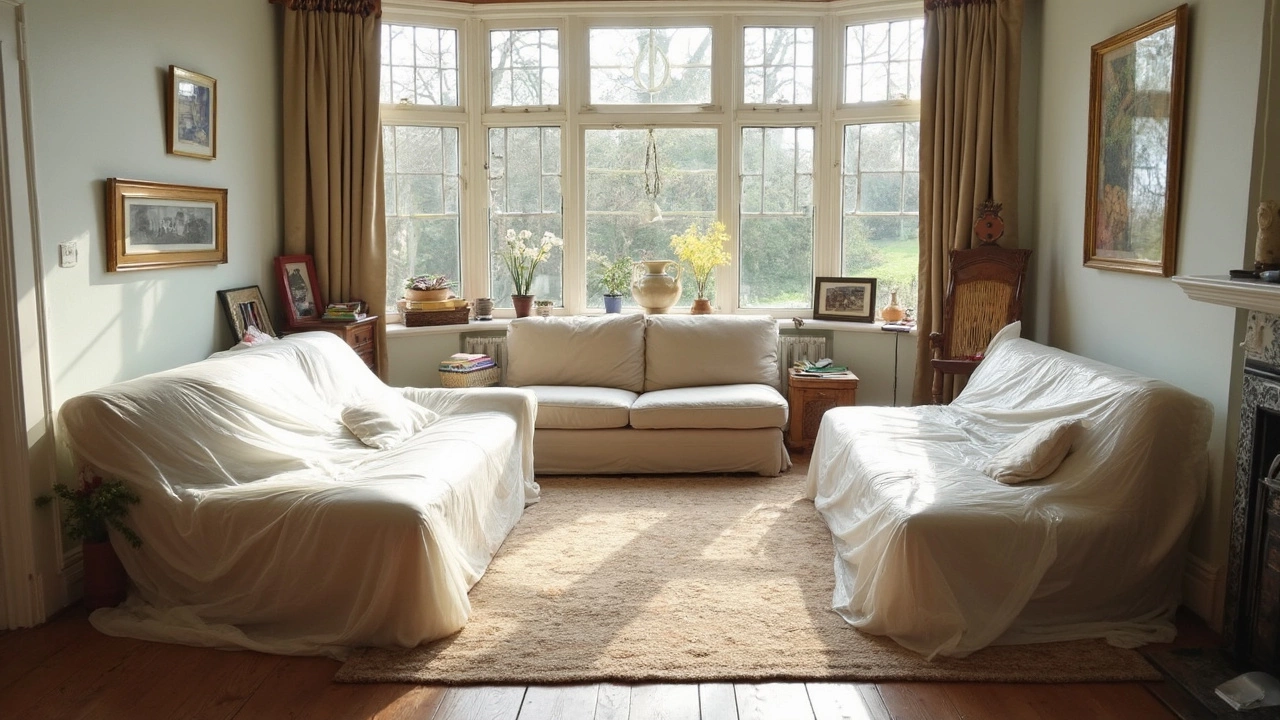Wrap Furniture Plastic: What It Is and Why It Matters
If you’ve ever spilled coffee on a sofa or worried about scratches on a new table, you know the pain of damaged furniture. A plastic wrap can be a quick, cheap shield that keeps your pieces looking fresh. It’s not just for moving trucks; today’s wraps are clear, strong, and can even add a sleek look.
Choosing the Right Plastic Wrap for Your Home
Not all wraps are created equal. Look for a product that’s UV‑resistant if you place furniture near windows – the sun can make cheap plastic turn yellow. A thickness of 2 mils or more works well for sofas and chairs, while thinner film is fine for shelves or table legs. If sustainability matters to you, check for recyclable or biodegradable options. Some brands even add a texture that mimics fabric, giving a soft feel without the cost of upholstery.
Measure the furniture first. Wraps that come in rolls let you cut to size, avoiding bubbles and folds. For irregular shapes, a self‑adhesive wrap can stick without tape, making removal easier later on.
Simple DIY Steps to Wrap Furniture Like a Pro
1. Clean the surface. Dust and grease prevent the wrap from sticking properly. Use a mild soap and dry thoroughly.
2. Lay out the film. Unroll a piece on a flat surface and smooth out any creases.
3. Wrap and seal. Start at one edge, pull the film tight, and smooth it down with your hand or a squeegee. Overlap seams by at least an inch and press firmly.
4. Trim excess. Use a sharp utility knife or scissors for clean edges. For a finished look, tuck the extra film under the furniture leg or use a small piece of double‑sided tape.
5. Check for bubbles. Small air pockets can weaken protection. Pop them with a pin and smooth the film again.
Wraps can be removed without damage when you want to refinish or change the look. Gently peel the film back, and any adhesive residue can be cleared with a bit of rubbing alcohol.
Besides protection, plastic wraps can help with seasonal storage. Cover a winter coat rack or a garden bench before the snow, and you’ll avoid rust and grime. When you need to move furniture, a well‑applied wrap stops scratches in transit.
For anyone looking for a low‑cost, low‑maintenance solution, plastic wrap is a solid choice. It works on sofas, coffee tables, bookcases, and even outdoor patio sets. Just pick the right thickness, watch the sun exposure, and follow the simple steps above.
Ready to give your furniture a shield that lasts? Grab a roll of quality wrap, follow the guide, and enjoy a worry‑free home for months to come.
Is it Okay to Wrap Furniture in Plastic for Storage?
Wondering if plastic wrap is a smart move for storing your furniture? This article breaks down when it helps, when it can backfire, and how to do it right. You’ll learn about different plastics, types of furniture that need extra care, and safe alternatives. Plus, get solid tips on keeping your items in good condition whether you’re stashing them for a month or a year. No sales talk—just practical advice you can use now.
More
